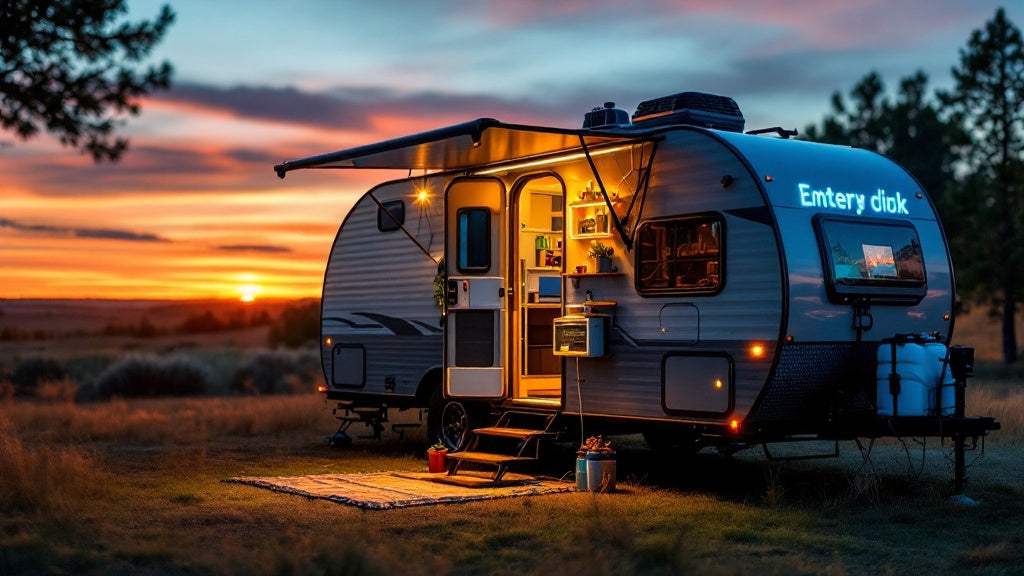
Adding a Second Battery to Your Trailer: Wiring Tips & Tricks
Share
Introduction
Adding a second battery to your trailer can greatly enhance its functionality, allowing you to power additional accessories, extend battery life, and ensure a reliable power supply for longer trips. Whether you're running extra lights, a refrigerator, or an inverter, properly wiring a second battery is essential for safety and efficiency.
In this guide, we’ll walk you through the key considerations, wiring methods, and best practices to successfully add a second battery to your trailer. By following the right techniques and using high-quality materials, you can ensure that your electrical system runs smoothly and reliably for years to come.
Why Add a Second Battery to Your Trailer?
There are several reasons why installing a second battery in your trailer is beneficial:
- Increased Power Capacity – A second battery provides additional stored energy, preventing power shortages on long trips.
- Reduced Strain on Primary Battery – Instead of relying solely on one battery, you can distribute the load between two, prolonging battery life.
- Dedicated Power for Accessories – Running appliances, lights, or electronics without draining your primary battery ensures your trailer remains fully functional.
- Backup Power Source – In case of primary battery failure, the secondary battery serves as an emergency power supply.
- More Efficient Charging – If wired correctly with an isolator, the second battery can charge while driving, ensuring it is always ready for use.

Choosing the Right Battery Setup
When adding a second battery, you have two main configuration options:
1. Parallel Wiring (12V System, Increased Capacity)
- Maintains the system voltage at 12V.
- Doubles the amp-hour (Ah) capacity.
- Ideal for RVs, campers, and trailers requiring longer power use.
2. Series Wiring (24V System, Increased Voltage)
- Increases the voltage to 24V.
- Keeps the amp-hour rating the same.
- Suitable for high-power applications that require 24V.
For most trailer applications, parallel wiring is the preferred choice to maximize battery life while keeping a standard 12V setup. This ensures compatibility with existing trailer electronics while extending available power.
What You’ll Need
Before starting, gather the following materials:
- Second deep-cycle battery AGM, lithium, or lead-acid
- High-quality wire depending on power needs
- Battery isolator or switch to control charging and prevent draining
- Inline fuse or circuit breaker for safety
- Ring terminals and connectors
- Heat shrink tubing or electrical tape
- Multimeter for voltage testing
- Wire loom or conduit to protect wiring from abrasion and exposure
- Zip ties and mounting brackets to secure wiring and components

Step-by-Step Guide: Wiring a Second Battery
Step 1: Choose a Location for the Second Battery
Find a secure, well-ventilated area in your trailer to mount the second battery. Ensure it is away from heat sources and water exposure. If your trailer has a dedicated battery box, use it to prevent external damage and exposure.
Step 2: Install a Battery Isolator or Switch
A battery isolator ensures that your primary battery remains charged while allowing the secondary battery to power your trailer accessories. If you prefer manual control, a battery switch can be used instead. Isolators prevent the second battery from draining the main battery when the engine is off, helping maintain starting power.
Step 3: Connect Batteries in Parallel
For a 12V parallel setup, wire the batteries as follows:
- Connect the positive terminal of Battery 1 to the positive terminal of Battery 2 using a 10 GA wire.
- Connect the negative terminal of Battery 1 to the negative terminal of Battery 2 with another 10 GA wire.
- Use an inline fuse near the primary battery for protection.
- If using a battery isolator, connect it between the alternator and the batteries according to manufacturer instructions.
Step 4: Secure and Protect Wiring
- Use different colored wires to differentiate connections easily.
- Protect all connections with heat shrink tubing or electrical tape.
- Secure the wiring with zip ties or cable clamps to prevent movement.
- Use a wire loom or conduit to shield wires from physical damage and weather conditions.
Step 5: Test the System
- Use a multimeter to check voltage and ensure both batteries are functioning correctly.
- Start your trailer and verify that both batteries are charging as expected.
- Test connected appliances and accessories to confirm stable power output.
- Check for any voltage drops or loose connections that may affect performance.

Tips for Maintaining Your Dual-Battery System
To ensure longevity and efficiency, follow these maintenance tips:
- Regularly check battery voltage to avoid overcharging or deep discharging.
- Keep terminals clean and corrosion-free by applying dielectric grease.
- Use a trickle charger or solar panel to maintain battery charge when the trailer is not in use.
- Inspect wiring connections periodically to prevent loose or damaged wires.
- Check fuses and circuit breakers regularly to ensure they are intact and functioning.
- Monitor battery health using a battery monitor or voltage gauge to detect any performance issues early.
Common Mistakes to Avoid
- Using Incorrect Wire Gauge – Ensure you're using the appropriate thickness (10 GA for main connections, 12 GA/14 GA/16 GA for accessories).
- Skipping the Battery Isolator – Running a second battery without an isolator can drain both batteries, leading to unexpected power loss.
- Poor Grounding – Ensure both batteries are properly grounded to avoid electrical issues.
- Overloading the System – Be mindful of how much power your second battery can handle to prevent overheating and damage.
- Ignoring Ventilation – If using lead-acid batteries, ensure proper ventilation to prevent gas buildup.

Conclusion
Adding a second battery to your trailer is a smart upgrade that enhances power capacity, extends battery life, and ensures a reliable electrical system for all your needs. By using high-quality materials, following proper wiring techniques, and implementing essential safety measures, you can create a safe and efficient dual-battery setup.
Whether you’re an experienced DIYer or a first-time trailer owner, this upgrade provides long-term benefits for your trailer’s electrical system. You also might be interested to check our blogs about Essential Tips for Efficient Trailer Wire Management and How to Extend Trailer Wiring If you've successfully added a second battery to your trailer, share your experiences in the comments below! Have questions or need troubleshooting advice? Let’s discuss them together!








